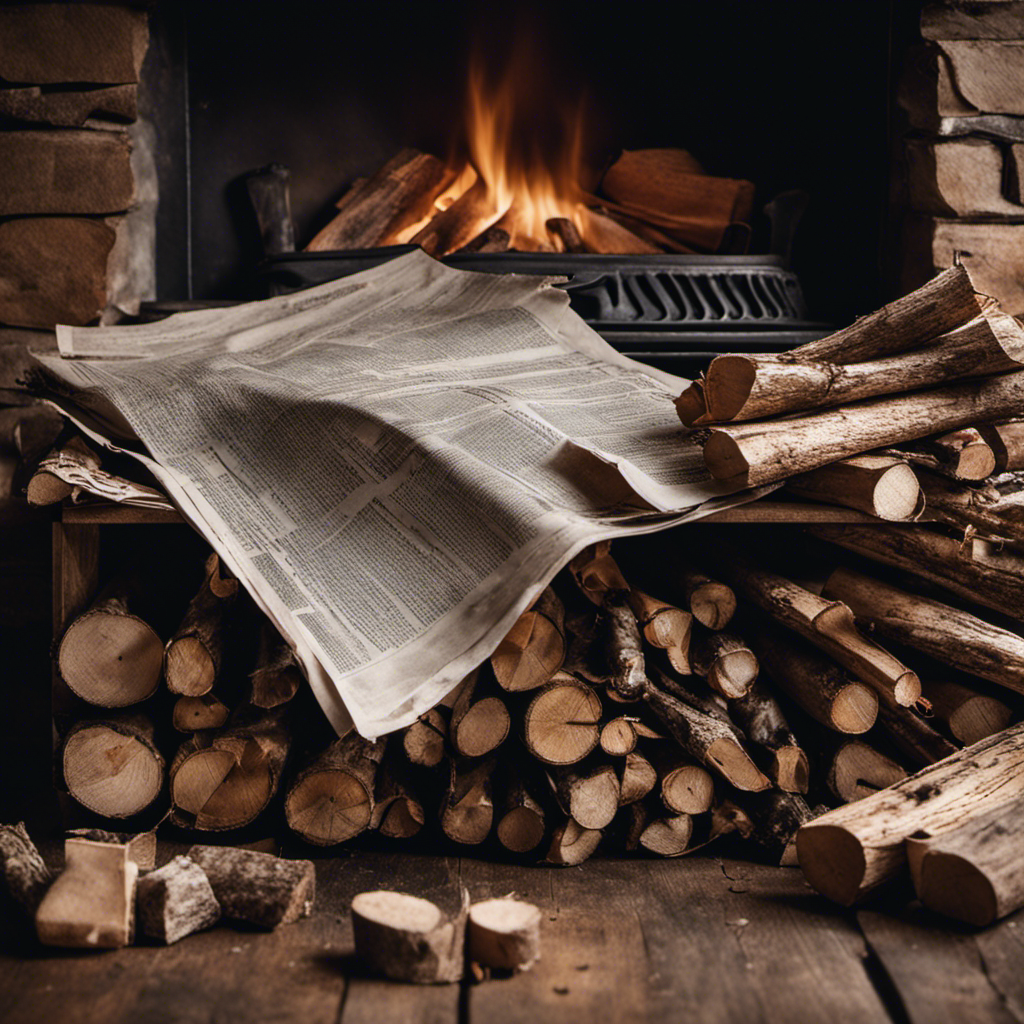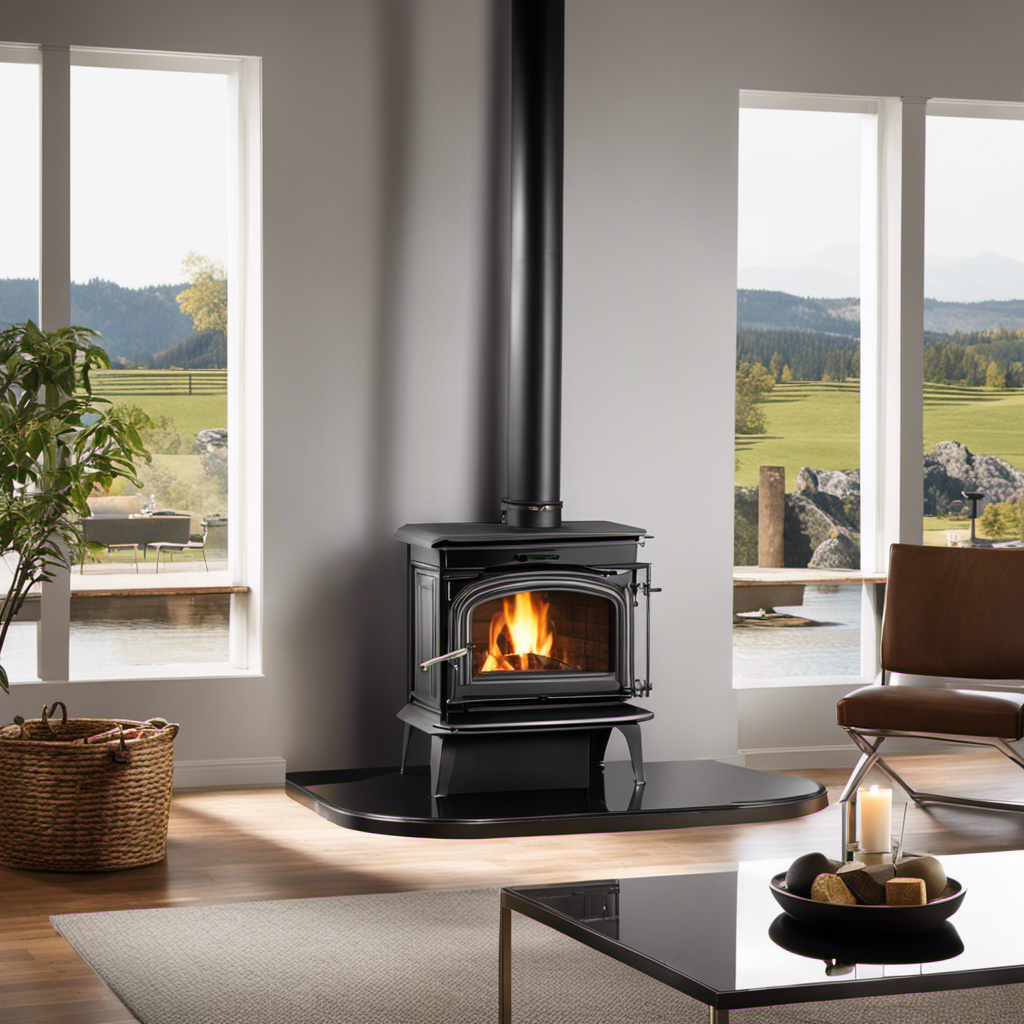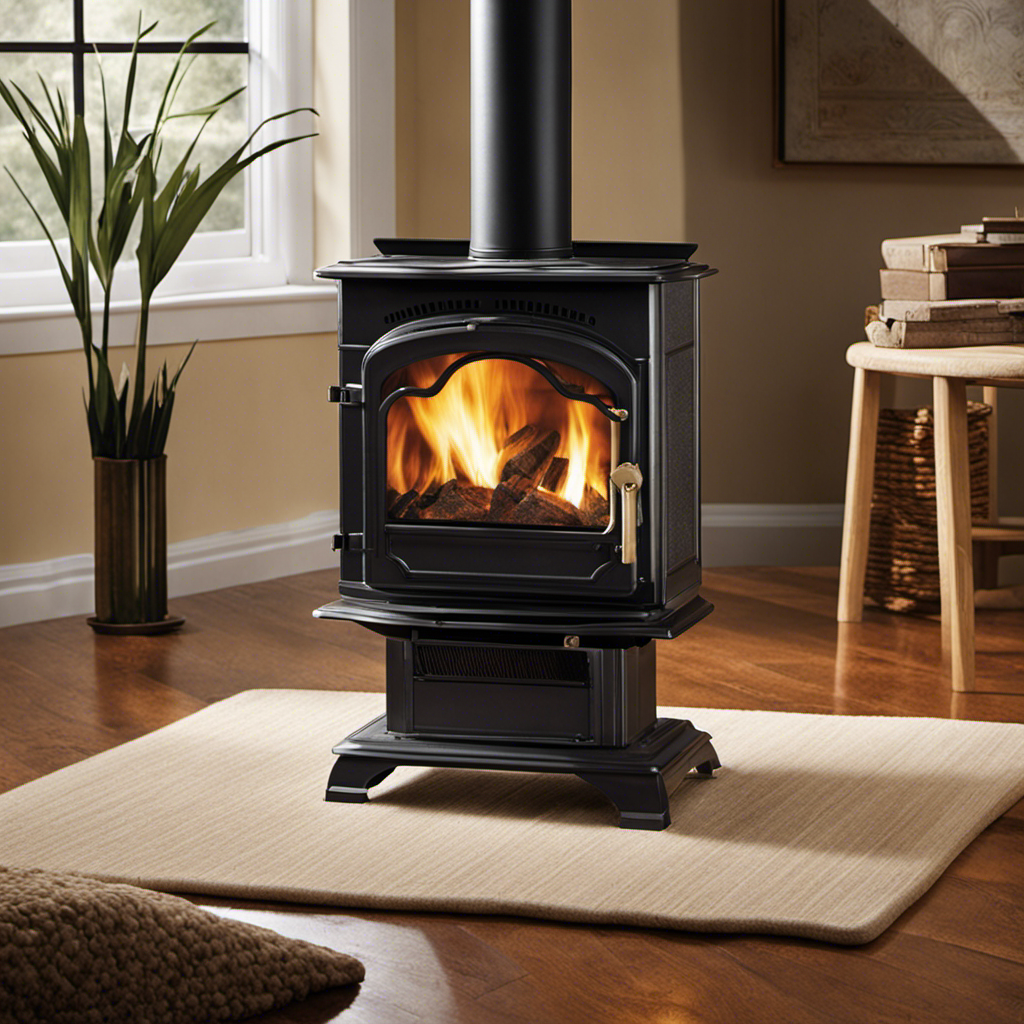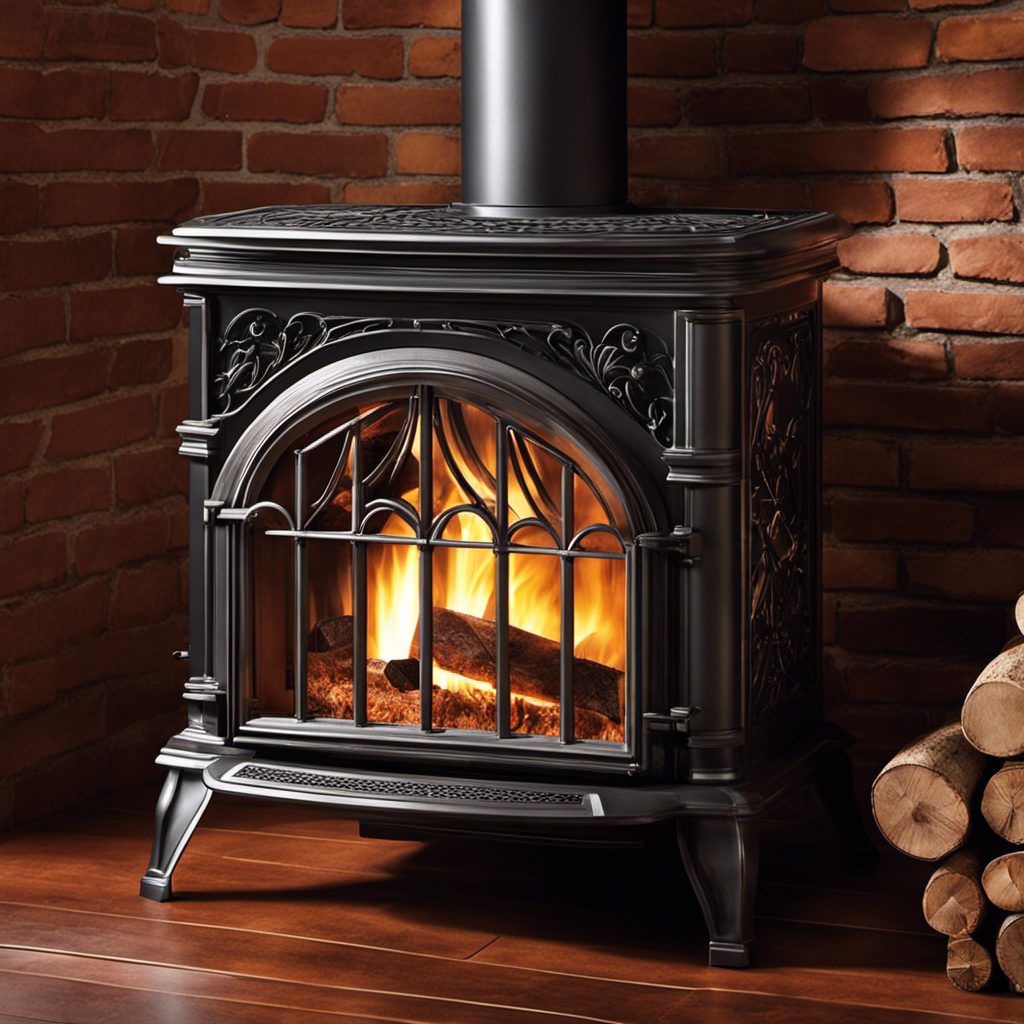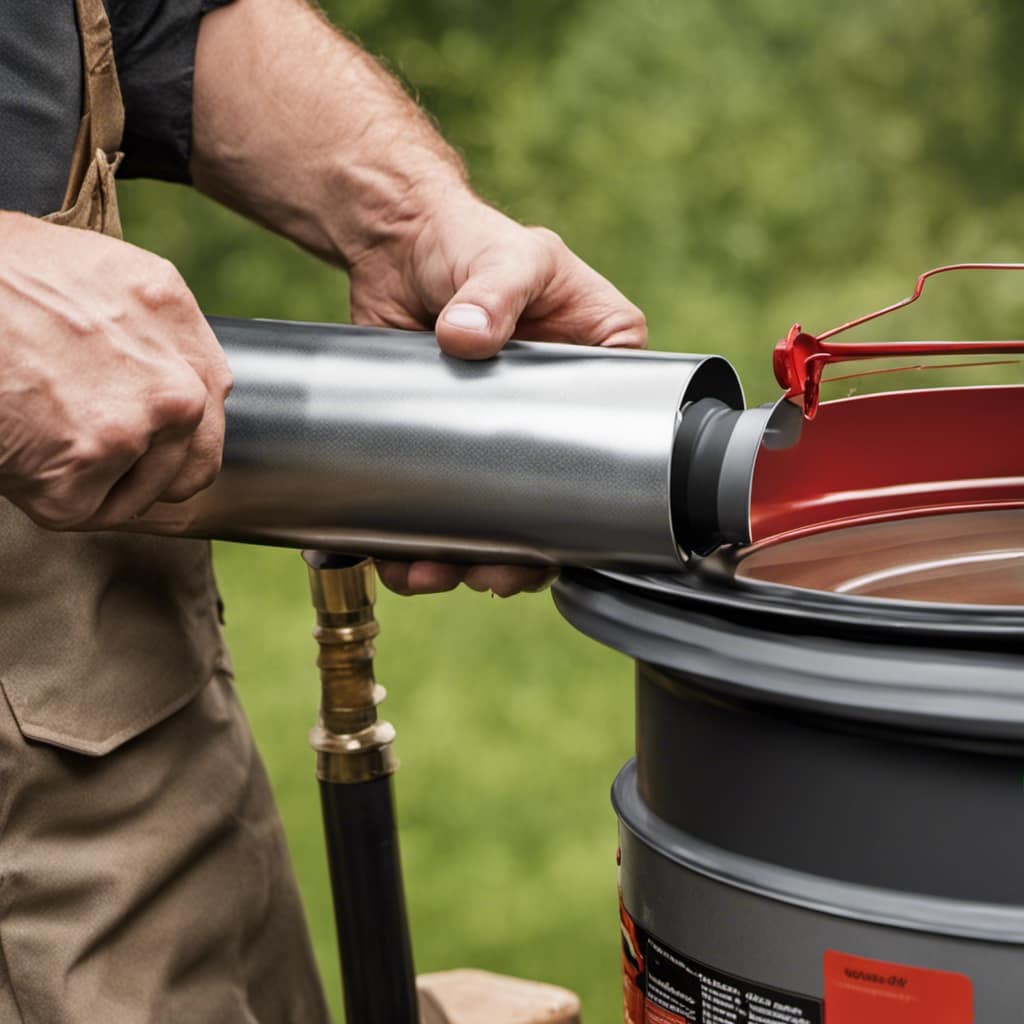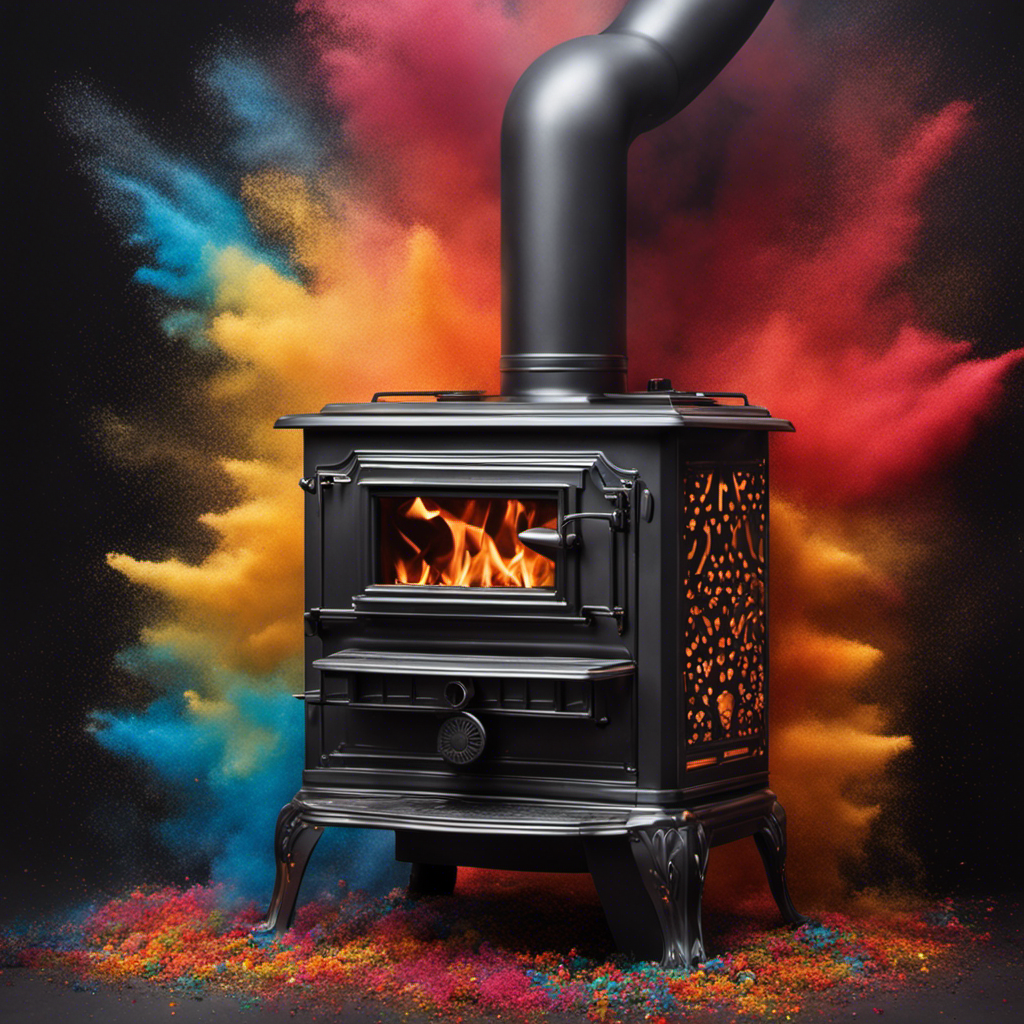If you feel the desire to cozy up by the fire but realize you have run out of kindling, do not worry, my friends. I have the perfect solution for you.
In this article, I will guide you through the art of starting a fire in a wood stove without any kindling. With a few simple tricks up my sleeve, you’ll be basking in the warmth of a crackling fire in no time.
Let’s get started, shall we?
Key Takeaways
- Select seasoned wood for efficient burning and less smoke.
- Use alternative fire starters such as wax-coated fire starters or compressed sawdust briquettes.
- Properly stack the wood in the firebox for optimal airflow.
- Maintain the fire by adding a log every 30 minutes and regularly cleaning the chimney for proper ventilation.
Choosing the Right Wood
I’m trying to figure out which type of wood is the best for my wood stove. When it comes to choosing the right wood, there are a few factors to consider.
The first important thing is to select seasoned wood. Seasoned wood has been properly dried, which makes it burn more efficiently and produce less smoke. It’s best to avoid using freshly cut or green wood as it contains a lot of moisture, which can lead to a smoky fire and inefficient burning.
Additionally, proper wood stacking techniques are essential for optimal airflow. Stacking the wood loosely, with enough space between the logs, allows for better oxygen circulation and helps the fire burn more efficiently.
Now that we’ve discussed choosing the right wood and stacking it properly, let’s move on to preparing the firebox.
Preparing the Firebox
Before starting the fire, it’s important to clear out any ashes from the previous burn, so that the firebox is clean and ready for the new fire. Cleaning the firebox ensures proper airflow and prevents any leftover debris from interfering with the flames. Here are some steps to follow in preparing the firebox:
- Use a fireplace shovel to scoop out the ashes and place them in a metal container.
- Dispose of the ashes in a safe and appropriate manner, away from flammable materials.
- Use a brush or vacuum to remove any remaining ashes or soot from the firebox walls and floor.
- Inspect the firebox for any signs of damage or cracks and address them before starting the fire.
- Arrange the logs in a way that allows for optimal airflow and ensures a steady, well-balanced fire.
By properly cleaning the firebox and arranging the logs, you can create a safe and efficient fire.
Now, let’s move on to the next section about using alternative fire starters.
Using Alternative Fire Starters
To enhance the fire-starting process, I recommend trying out alternative fire starters such as wax-coated fire starters or compressed sawdust briquettes.
These DIY fire starters are excellent options for starting a fire in a wood stove without kindling. Wax-coated fire starters are made by dipping small pieces of cardboard or wood into melted wax, creating a compact and easily ignitable fire starter.
Compressed sawdust briquettes are another natural fire starter that can be purchased or made at home by compressing sawdust and other flammable materials into a solid form.
These alternative fire starters provide a reliable and efficient way to ignite your wood stove, especially when kindling isn’t readily available.
Building the Fire
While building the fire, remember to arrange the larger logs at the bottom and gradually add smaller pieces on top for optimal airflow. This ensures a steady and efficient burn, allowing the fire to reach its full potential.
Fire safety precautions should always be followed when starting a fire in a wood stove. Here are some key points to keep in mind:
- Clear the area around the stove of any flammable materials.
- Use dry, seasoned wood to prevent excessive smoke and creosote buildup.
- Never leave the fire unattended and always have a fire extinguisher nearby.
- Regularly clean the stove and chimney to prevent the buildup of dangerous creosote.
- Familiarize yourself with the different types of wood stoves and their specific safety requirements.
Maintaining the Fire
I’ll make sure to add a log every 30 minutes to maintain the fire’s heat and keep it burning.
When it comes to fire safety precautions, it’s crucial to prioritize proper ventilation for optimum combustion. A well-ventilated fire not only ensures efficient burning but also reduces the risk of carbon monoxide buildup.
To achieve this, I always ensure that the air vents are fully open when starting the fire and gradually adjust them as needed to maintain a steady burn. It’s essential to avoid overcrowding the stove with logs, as this can restrict airflow and hinder proper combustion.
Additionally, I regularly check the chimney for any blockages and clean it if necessary to maintain proper ventilation.
Frequently Asked Questions
Can I Use Newspaper as an Alternative Fire Starter?
Yes, newspaper can be used as an alternative fire starter. It’s readily available and easily ignites. However, cardboard can be more effective as it burns slower and produces more heat. Wax coated fire starters are also a great substitute for kindling.
Is It Safe to Use Gasoline or Lighter Fluid to Start a Fire in a Wood Stove?
Using gasoline or lighter fluid to start a fire in a wood stove is extremely unsafe. Safety precautions must be taken when using alternative fire starters. Additionally, these methods have a detrimental environmental impact.
What Are the Common Mistakes to Avoid When Starting a Fire in a Wood Stove Without Kindling?
Common mistakes when starting a fire in a wood stove without kindling include using damp or green wood, overcrowding the stove, and neglecting to properly draft the chimney. Proper starting techniques are essential for a successful fire.
Can I Use Pine Cones or Dried Leaves as Alternative Fire Starters?
Yes, pine cones and dried leaves can be used as alternative fire starters for a wood stove. They are readily available and can provide the necessary heat and flame to ignite the larger pieces of wood.
How Long Does It Usually Take for a Fire to Be Fully Established in a Wood Stove Without Kindling?
On average, it takes about 10-15 minutes for a fire to fully establish in a wood stove without kindling. To speed up the process, try using alternative firewood options and properly stack the wood in the stove.
Conclusion
In the flickering glow of the crackling flames, the dance of warmth and comfort begins. With the right wood carefully chosen and the firebox prepared, starting a fire in a wood stove becomes an art.
Using alternative fire starters can ignite the blaze, and building and maintaining the fire requires skill and experience. As the fire roars to life, the wood stove becomes a sanctuary, enveloping the room with its soothing embrace.

